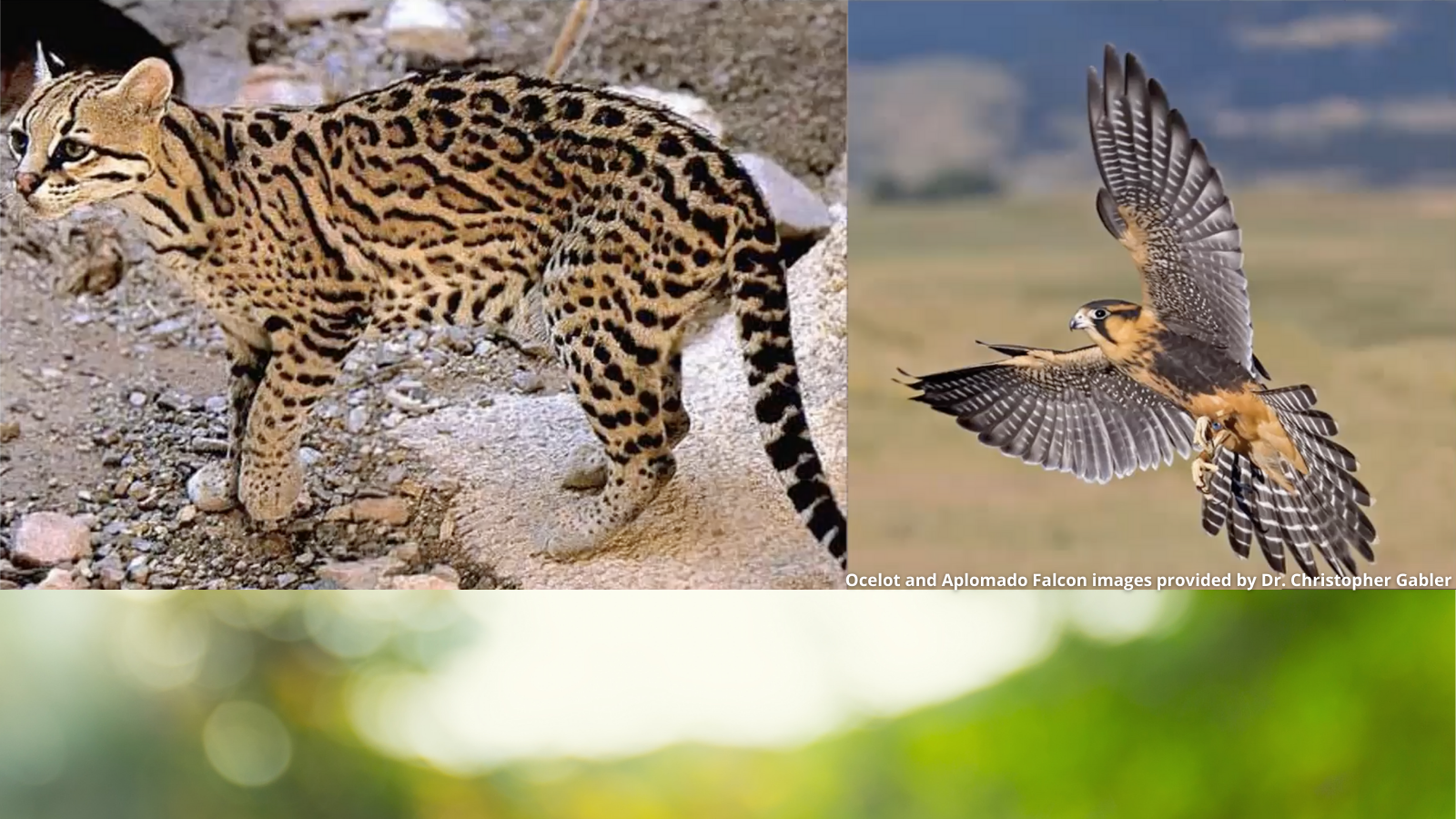Texas wildlife corridors
Infrastructure bill would provide $350 million for wildlife bridges and tunnels

On Thursday, September 2nd, Environment Texas hosted a webinar to discuss wildlife corridors and hear from several great speakers about solutions to fragmented habitat.
For too long, a labyrinth of roads, fences and sprawl has penned wildlife into smaller and smaller habitats. This can push whole ecosystems out of balance, cut off genetic flow between populations, leave animals short of key resources, interrupt migration cycles and leave species more susceptible to other challenges like disease, wildfires and climate change.
It can also lead directly to animal deaths as wildlife attempt to cross busy roads. The Humane Society estimates that vehicle collisions kill more than one million large animals each year on U.S. roads—that’s roughly one large animal every 26 seconds, and that’s not counting smaller mammals and birds who are struck. Endangered animals, such as the ocelot, are especially at risk. Dr. Sharon Wilcox—Texas representative for Defenders of Wildlife—noted that “the leading cause of ocelot deaths in Texas are vehicular collisions.”
Map of Texas ocelots’ range provided by Dr. Sharon Wilcox
Lynn Cuny—founder and executive director of Wildlife Rescue and Rehabilitation—noted the saddening fact that “because of urban encroachment,” there is nowhere “where wild animals are not affected by us and everything that comes with us. There is not one animal anywhere who is truly safe from a vehicle.”
We can’t undo all of the development in this country, but we can get clever about how to connect these small habitat “islands” by using corridors and restoring some semblance of complete ecosystems. Doing so can give wildlife the space they need to survive. Corridors can be made up of single projects or networks of small-scale infrastructure, including wildlife crossings like the Tobin Land Bridge in San Antonio,
Photo of the Robert L.B. Tobin Land Bridge in San Antonio provided by Jewell Lee Cozort
conservation easements and wildlife refuges to provide areas of core habitat along which animals can move like the Neches River Corridor; and tunnels under highways like at the Laguna Atascosa National Wildlife Refuge.
Jewell Lee Cozort shared images of underpass crossings
Research studies show that wildlife crossing structures and fencing designed to facilitate the passage of animals over or under our highways are highly effective, reducing wildlife-vehicle collisions by as much as 97%.
Wildlife corridors are finally, thankfully, getting the attention they desperately need. The Biden administration’s recent America the Beautiful report encourages national, state and local agencies to prioritize wildlife corridors when making plans to conserve more places.
The Bipartisan Infrastructure bill passed by the Senate includes $350 million in funding for a pilot grant program to reduce wildlife collisions and improve human safety on roads. This would fund overpasses, underpasses, and fencing on highways.
In addition, in the last Congress, the Wildlife Corridors Conservation Act, or HR 2795 in the House and S 1499 in the Senate, would dedicate $50 million a year in grant funding for wildlife corridors, including other strategies like conservation easements, encouraging private landowners to remove fencing in strategic places, Planting certain flora along migratory routes for birds and pollinators, and emoving and/or re-constructing old infrastructure such as dams and spillways so that fish can safely swim upstream.
Language from the Wildlife Corridors Act was included in the House infrastructure bill called the INVEST Act, but not included in the Senate infrastructure bill.
House Democrats have proposed $10 million for wildlife corridors in the budget reconciliation bill.
If these bills pass, they will represent a substantial win for wildlife conservation. As we have heard today, corridors work, and these bills would ensure that more corridors will be built across the nation, including in Texas.

